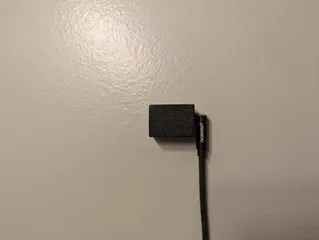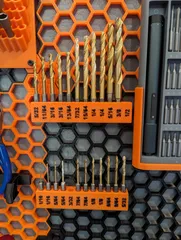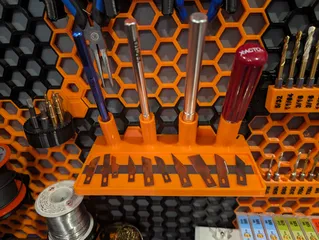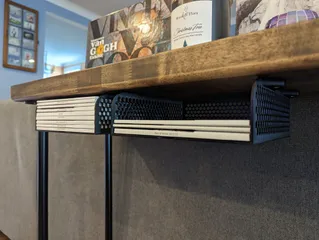Hard Drive Enclosure for 16 Drives (JBOD/HBA)
Description
PDFPlease comment, rate, and post a make!
I ran out of physical space to add more hard drives to my home server. Given that I already had a few parts laying around, I didn't want to spend several hundred dollars on a prebuilt enclosure. So, I set out to make my own.
BOM (affiliate links):
- >1.2 Kg of filament
- This SAS adapter
- An ATX power supply.
- This is sized for a PSU of 160x150x86mm and can accommodate anything shallower.
- These nylon standoffs if you are using more than one adapter card.
- Four 120mm 12V fans.
- I'm using the Noctua NF-P12 due to their low noise at full speed.
- While the top has space for 25 mm thick fans, you'd get some benefit by using 15 mm thick fans instead like the NF-A12x15
- (Optional) A fan power hub
- I'm using a Corsair power hub that I had laying around, but something like either of these two should work.
- Alternatively, there are plenty of options for using adapters/splitters to power the fans directly off the PSU.
I'm using this SFF-8088 cable to connect the enclosure to my server through an LSI 9200-8E that I picked up on eBay for about $25. There are newer cards capable of supporting more connections, but I didn't want to splurge too much before doing a proof of concept.
Printing:
I printed everything at default settings using Bambu PETG Basic. The panels with holes on the edge will need supports under the strip with the holes. My drives are sitting at ~30°C, so PLA would probably have been fine.
The model file has a user parameter for joint clearance if you need to dial it in.
Assembly:
All pieces are held together by interference fit joinery, so no gluing is required. The tenon joints might need a slight tap from something mildly heavy to help them close. I used a 4 oz hammer, but the backside of a screwdriver should get the job done just as well. Assembly should be relatively straight forward, but it is critical to double-check the orientation of each piece before popping the joints together.
- Join the bottom pieces first.
- Join the two back panels and attach to the bottom.
- Join the panels for each side and then attach to the bottom and the back panels.
- Join the panels for the front and then attach to the bottom and side panels.
- Join the panels for the top together.
- Install the adapter card by putting it level with the external opening and pushing in. The holes should line up with the standoffs that are printed on the bottom panel.
- Install the 15 mm long standoffs if adding a second card.
- Secure the top card with M3 screws. Anything 6 mm long and shorter should work.
- Install the PSU and secure it in place using the normal mounting screw points.
- Install the fans.
- Install all cabling and make sure the cables are free of the top fans.
You'll have to decide how you want to handle powering the PSU as there are a number of options. Some examples:
- I have a modular PSU, so I ground the PS_ON pin directly on the PSU.
- Use a jumper plug
- Install a switch or latching button
Tags
Model origin
The author marked this model as their own original creation.




